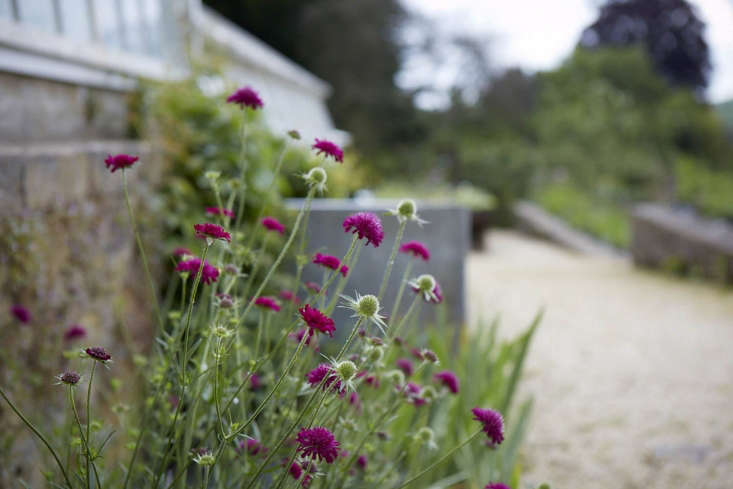When Julie Dolphin and her husband decided to “downsize” to a house with a view in the Cotswolds, they ended up with a plant nursery. Idyllically situated on a slope near Stroud, the Nursery at Miserden not only has wonderful views but also an enviable collection of early 20th century glasshouses. Inside, perennials are raised and coffee (and lunch) is served.
Photography by Britt Willoughby Dyer for Gardenista.

The glass buildings are a big draw in themselves. “People love to walk inside them, as much for the architecture as the plants,” says Julie. “The original window levers are a sight to behold!”

All of the glass buildings at Miserden were designed by the Nottingham-based company Foster & Pearson. “Half of them are in pretty good repair,” says Julie. However, maintenance and restoration never finishes.
Foster & Pearson’s sturdy structures survive in old kitchen gardens all over the UK and the company is still in business. For a more recent commission, see Bayntun Flowers: Florist Polly Nicholson’s Walled Garden in Wiltshire.

Not one to waste any time, the nursery run by Julie and husband Steve Richardson has been up and running for 18 months but already has a reputation for excellence. As a former journalist, she appreciates the importance of reaching out not only to the local community but via Facebook and Instagram.
Miserden made an appearance on the BBC’s coverage of the Chelsea Flower Show in May, tracing designer Chris Beardshaw‘s preparation for this year’s show, in which he chose the nursery for raising his own plants.

The Nursery at Miserden is more than the sum of its parts: Julie has taken the approach of planting the whole nursery as a garden, instead of just selling plants in pots.

Although it is not difficult to find villages in the Cotswolds which are ridiculously pretty, Miserden seems especially so. And it’s not overcrowded, being situated slightly to the west of the tourist trail, near Stroud. The café at the nursery, open since the spring, is run in conjunction with the Miserden estate. The nursery is at the entrance to the Edwardian garden of Miserden Park (open between spring and autumn). It surrounds a 17th century Jacobean manor, overlooking the Golden Valley.

The Nursery at Miserden specializes in herbaceous perennials, with a focus on growing them on site.

Just as these buildings were traditionally divided into specific uses, the south-facing walls soaking up sun for fruit traditionally grown in hotter places, they are being designated once again. Although in this era the arrangement is less formal; the building shown here has come to be known as the “salvia house,” for instance. “I’d love to showcase scented pelargoniums in one of the smaller glasshouses,” says Julie, “and succulents in another.”

Planning a visit to the Cotswolds in fall or spring? See:
• A Gothic Garden Visit, Courtesy of the Mitfords
• Garden Visit: Snowdrop Season at Painswick Rococo Garden
• Garden Visit: Sezincote in Gloucestershire.









Have a Question or Comment About This Post?
Join the conversation